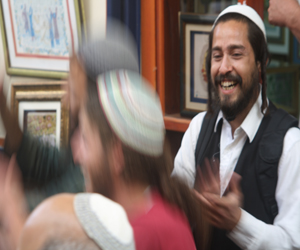Early Klezmer History
The earliest written records about klezmorim (klezmer musicians) and their guilds are from the Middle Ages and date back to 1558 in Prague, and 1654 in Lublin. While women musicians are mentioned in these early documents, they seem to disappear from the klezmer scene, reappearing only in the later years of the 20th century. Before this time, music on the Jewish scene was scarce, owing to the prohibition of listening to instrumental music as a mourning custom relating to the destruction of the Second Temple. By the Middle Ages, however, enough time had elapsed so that, at least in practice, the prohibition was relaxed.
Family Affair
Various rabbinic rulings were issued regarding the number of musicians permitted to perform at specific functions, such as weddings. The music profession, like so many other occupations, ran in families. The musicians were not just popular among their own people—Christian nobility and well-to-do merchants sought the services of the klezmorim, as well. Music guilds were formed to set fees, vote on and license members, and to provide benefits.
In one instance, the Master of Ceremonies for a wedding (badchan) complained that he deserved the monopoly on such services in this city. The badchan's duties were all-encompassing including such wedding services as improvising songs and poems relating to the new couple, their guests, and their presents; performing on the violin; acting as a bandleader; joke telling; serving up impersonations; and in general, entertaining the wedding party during the course of one full week.
Exclusive Rights
In this case, a bandleader tried to compete and get work as a badchan. The town council agreed that the badchan should have the exclusive rights to all work of this nature, but the bandleader obtained permission to work as a badchan four years later, because his act was popular.
A kind of argot sprang up among the klezmorim which borrowed a great deal from the slang of the underworld. This type klezmer-speak was known as "klezmer loshen" or klezmer tongue.
In 1805, the Pale of Settlement was established in Czarist Russia as the only areas in which Ashkenazi Jews were permitted to live. 95 years later, some 5.5 million Jews had settled in the Pale. The Pale was comprised of rural towns and the Jews called the smallest towns "shtetl" (singular) and "shtetlach" (plural form). Klezmorim might be based in a certain shtetl, but tended to move about quite a bit to perform at special occasions as well as concerts for local nobility.
Combined Forces
Other than the klezmorim, the only other professional musicians in the Pale were the Romany (gypsies) and as a result, the two often combined forces. The influence of either group's music can be felt on the others'. Thanks to this trading of musical influences, many of the klezmer tunes of Hungary survived into the 20th century, though the Jews of Hungary, including the klezmorim, had perished.
By the 19th century, klezmer instruments included the violin, tsimbl (hammered dulcimer), flute, cello or bass, and plectrum instruments such as small drums or mandolin. The violin came to overtake the tsimbl as the lead instrument and a style was developed in which the violin would mimic human speech.
After this time, brass and big sound percussion instruments were introduced and clarinet started to edge out the violin because of its resemblance to the human voice and its clarity on records. Some of these modern klezmer innovations were due to Jews having played in army bands. When these Jewish soldiers were demobilized, they often brought home these instruments and their newfound musical skills.

